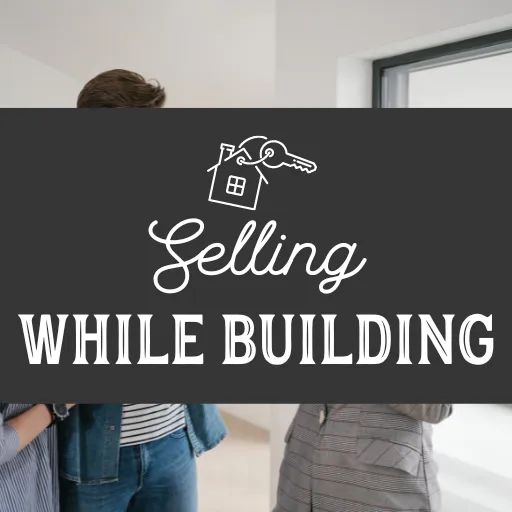Education& Resources helping homeowners and builders make informed choices about Building homes that last
Our ultimate goal is to create a community of builders and homeowners who are dedicated to improving the quality of life in their neighborhoods and communities.
Education& Resources helping homeowners and builders make informed choices about Building homes that last
Our ultimate goal is to create a community of builders and homeowners who are dedicated to improving the quality of life in their neighborhoods and communities.

What's The Difference: LVP vs. LVT Flooring
Hey everyone, TJ here with Andrew from CTW Carpet and Flooring. Today, we're diving into the world of flooring to help you understand the differences between LVP (Luxury Vinyl Plank) and LVT (Luxury Vinyl Tile) flooring. If you're in the market for new floors, understanding these options can help you make an informed decision that suits your home’s needs and your personal preferences.
What is Luxury Vinyl Plank (LVP)?
Characteristics of LVP
Luxury Vinyl Plank (LVP) is designed to mimic the look of natural hardwood flooring. It comes in plank form, hence the name, and offers a realistic wood appearance with a variety of grain patterns and colors. LVP is known for its durability, water resistance, and ease of maintenance.
Installation Methods
Glue-Down: LVP can be glued directly to the subfloor. This method provides a more stable and permanent installation, ideal for areas with high foot traffic.
Click-Lock: This floating floor method involves planks that click together and float above the subfloor. It often includes a pre-attached underlayment, which adds cushioning and insulation.
Pros and Cons of LVP
Pros:
Durable and Scratch-Resistant: Perfect for high-traffic areas and homes with pets.
Water-Resistant: Ideal for kitchens, bathrooms, and basements.
Easy to Maintain: Simple cleaning with a damp mop and regular sweeping.
Cons:
Repair Complexity: Click-lock LVP can be harder to repair than glue-down, requiring more effort to replace damaged planks.
What is Luxury Vinyl Tile (LVT)?
Characteristics of LVT
Luxury Vinyl Tile (LVT) is crafted to look like stone, ceramic, or porcelain tiles. It offers a similar level of durability and water resistance as LVP but with the added aesthetic appeal of tile. LVT can also be grouted to achieve a more authentic tile look.
Installation Methods
Glue-Down: Similar to LVP, LVT can be glued directly to the subfloor, providing a stable installation.
Click-Lock: Floating floor installation, which is quick and less messy compared to glue-down.
Pros and Cons of LVT
Pros:
Realistic Tile Appearance: Available in various designs, including marble, slate, and ceramic looks.
Durable and Water-Resistant: Suitable for any room in the house, including wet areas.
Versatile Installation: Can be installed with or without grout, depending on your preference.
Cons:
Cost: Generally, LVT can be more expensive than LVP due to the detailed designs and additional materials like grout.
Repair Challenges: Similar to LVP, replacing individual tiles in a click-lock system can be more challenging than in a glue-down setup.
Key Differences Between LVP and LVT
Appearance and Design
LVP: Mimics hardwood planks with a variety of wood grains and colors.
LVT: Resembles stone or ceramic tiles with various patterns and the option to add grout for a more realistic look.
Applications
LVP: Best suited for areas where a wood-look is desired, such as living rooms, bedrooms, and hallways.
LVT: Ideal for areas where a tile-look is preferred, such as bathrooms, kitchens, and entryways.
Cost and Value
LVP: Typically more cost-effective than LVT.
LVT: Can be more expensive due to its intricate designs and the potential need for grout.
Making the Right Choice for Your Home
Choosing between LVP and LVT ultimately depends on your aesthetic preferences, the room's use, and your budget. Both options offer excellent durability, water resistance, and ease of maintenance, making them versatile choices for any home.
For more detailed information on flooring options and tips on selecting the best materials for your home, check out our resources on flooring basics and choosing the right flooring.
Thanks for joining us today. Don't forget to like, subscribe, and share this post to help us spread the word. If you have any specific questions or need further guidance, feel free to reach out. And as always, don’t forget to raise your standard! We'll talk to you soon.

Home Building Checklist
We understand that the process of building comes with a lot of decision-making. So we created the Home Building Checklist to guide your decision-making process, and it's yours for free here!
WHAT WOULD YOU LIKE TO LEARN?
How can we help?







Why You Will Love Working With Us


Transparency
Honesty is always the best policy, and this is the policy we swear by. We aim to be as transparent as possible with our clients when building their homes.
- We have no hidden fees or surprises.
- We disclose every invoice and bid because we have nothing to hide.
- We are upfront about all costs, including the price or materials and labor costs, so you can trust every dollar of the process.

Experience
Our team has over 25 years of experience in construction and design, so we know how to make your dream home a reality.
- Over 200 homes build with our combined expertise!
- 25 years experience in
Parade of Homes - Builder Of the Year with Madison Area Builders Association
Ultimately, we believe in raising standards
We believe that by helping to create a community of builders and homeowners who are dedicated to improving the quality of life in their neighborhoods and communities, we can help to create a more equitable and inclusive society.
We want to empower homeowners to become involved in the process of creating their own safe and beautiful living environments.
We also want to give builders the opportunity to make a lasting and positive impact on the community by providing quality homes and neighborhoods. By working together, we can help create a better future for everyone involved.

The Blessed to Build Foundation is a 501(c)3 Non Profit providing education & resources to help homeowners and home builders make informed choices about building homes that last.
Dane County, Wisconsin
Hire a Builder
If you are looking to build a new home in the following cities, connect with Sanctified Homes & Construction to start the conversation.
Copyright Blessed to Build Foundation, Inc. 501(c)3

